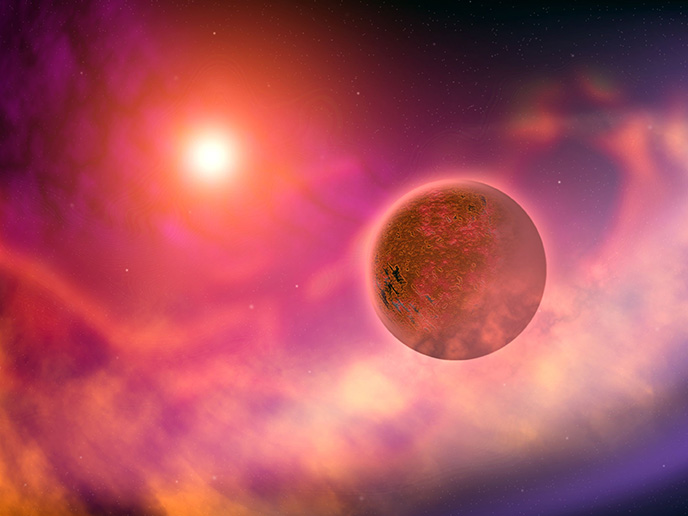Discovering the heaviest element ever in exoplanet atmospheres
While exploring planets orbiting stars outside our solar system, scientists supported by the EU-funded SPICE DUNE and FOUR ACES projects made an unexpected discovery. They found barium – the heaviest element detected in an exoplanet’s atmosphere so far – in the atmospheres of two gas giants. Their study was published in the journal ‘Astronomy & Astrophysics’. “This was in a way an ‘accidental’ discovery,” states study lead author and PhD student Tomás Azevedo Silva of the University of Porto, Portugal, in a news item posted on the website of the ‘European Southern Observatory (ESO)’. “We were not expecting or looking for barium in particular and had to cross-check that this was actually coming from the planet since it had never been seen in any exoplanet before.” The barium was discovered at high altitudes in the atmospheres of the gas giants WASP-76b and WASP-121b. The two exoplanets are also called ultra-hot Jupiters – a name given to planets roughly as massive as Jupiter that orbit very close to their stars. This close proximity means that it takes WASP-76b and WASP-121b less than 2 days to orbit their stars and additionally gives them scorching equilibrium temperatures over 2 000 ℃.
Heavier than iron
High enough to vaporise metals, these extreme temperatures also give these planets extraordinary features, such as the iron rain suspected to occur on WASP-76b. A 2020 study supported in part by FOUR ACES found that when the iron vapour is carried by strong winds to cooler night-side environments, it condenses into iron droplets. Yet, despite this amazing discovery, the astrophysicists were still surprised to find an element 2.5 times heavier than iron in the upper atmospheres of WASP-76b and WASP-121b. “Given the high gravity of the planets, we would expect heavy elements like barium to quickly fall into the lower layers of the atmosphere,” explains co-author Dr Olivier Demangeon, also from the University of Porto, in the same news item. Observing ultra-hot Jupiters provides scientists with valuable insight into exoplanet atmospheres. “Being gaseous and hot, their atmospheres are very extended and are thus easier to observe and study than those of smaller or cooler planets,” Dr Demangeon explains. To obtain their findings, the research team used the Echelle SPectrograph for Rocky Exoplanet and Stable Spectroscopic Observations instrument on ESO’s Very Large Telescope located in northern Chile. The fact that barium was found in both planets could mean that this heavy element is common in the atmospheres of ultra-hot Jupiters. But what natural process could result in barium being found at such high altitudes? As Azevedo Silva notes, the element’s existence there seems “puzzling and counterintuitive.” The researchers are currently unsure of the mechanisms involved. SPICE DUNE (A SpectroPhotometric Inquiry of Close-in Exoplanets around the Desert to Understand their Nature and Evolution) ends 2026. FOUR ACES (Future of upper atmospheric characterisation of exoplanets with spectroscopy) ends in 2023. For more information, please see: SPICE DUNE project FOUR ACES project web page
Keywords
SPICE DUNE, FOUR ACES, planet, exoplanet, WASP-76b, WASP-121b, gas giant, ultra-hot Jupiter, barium



